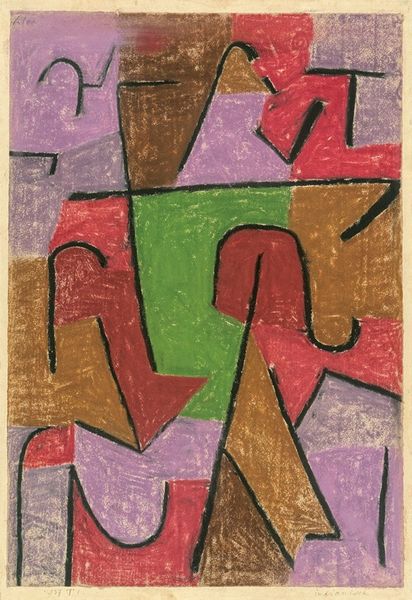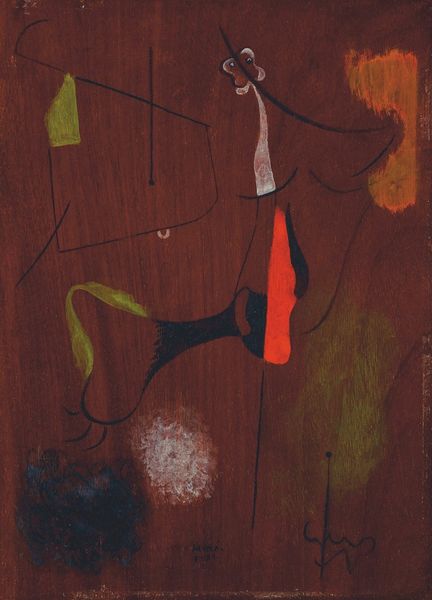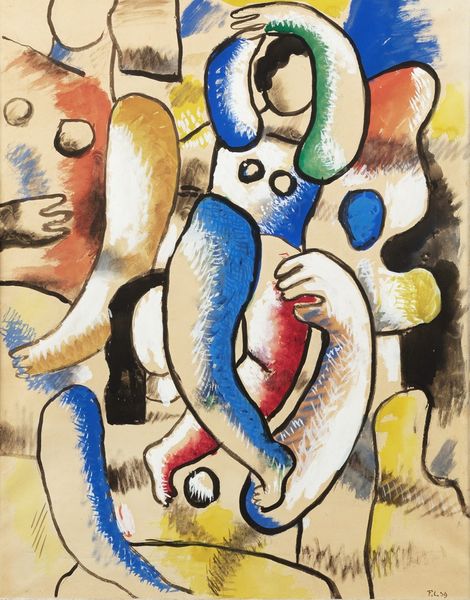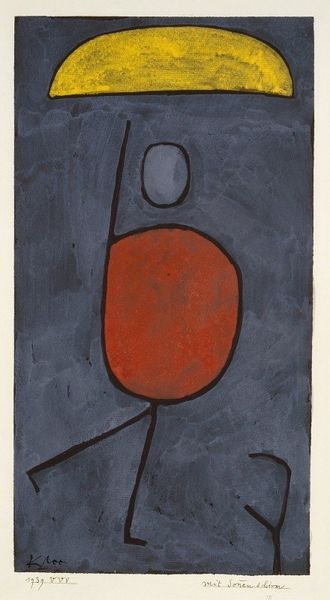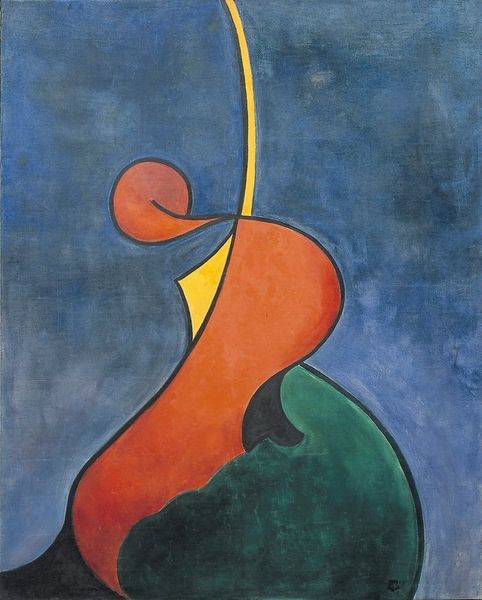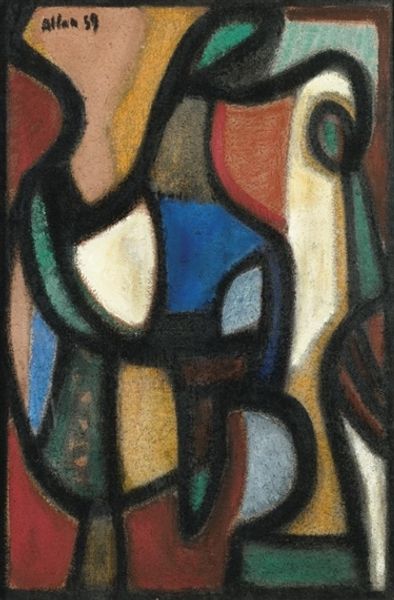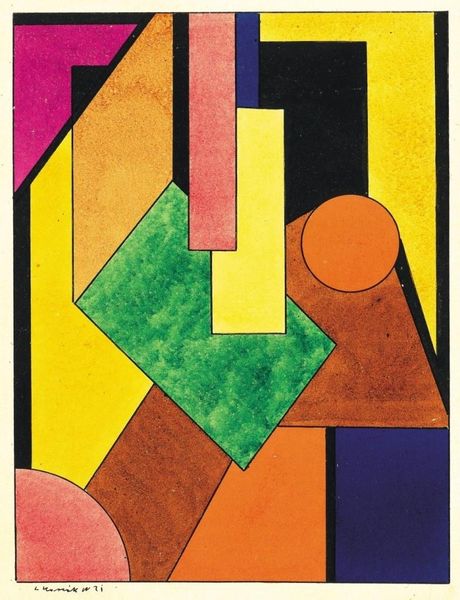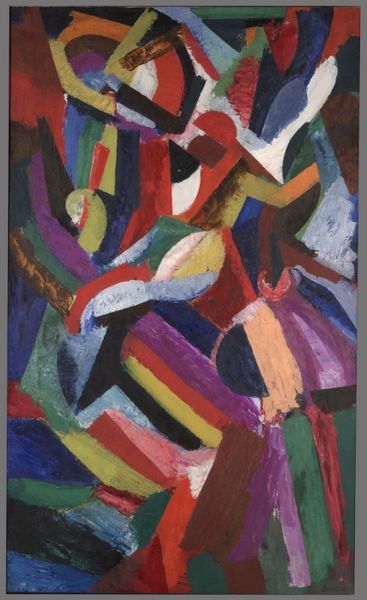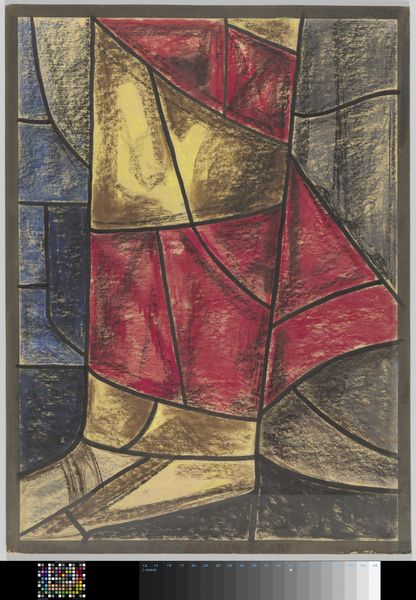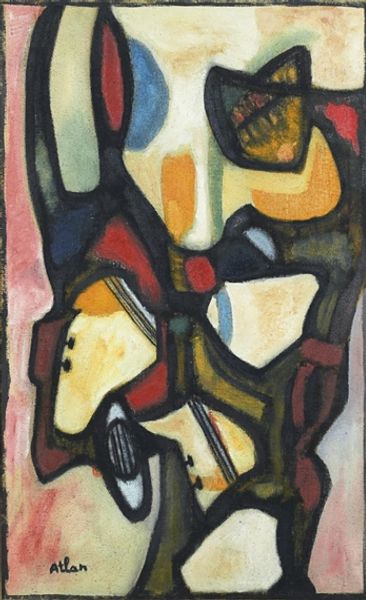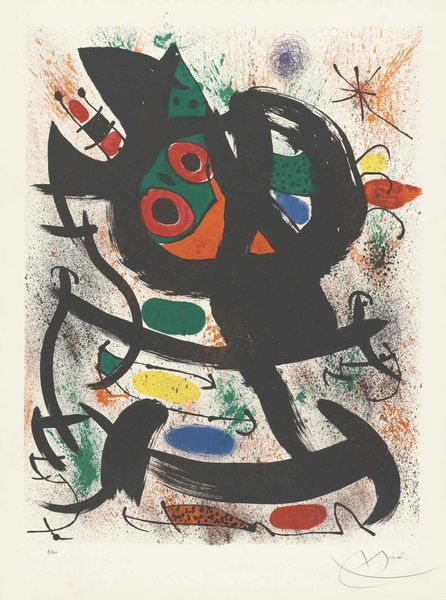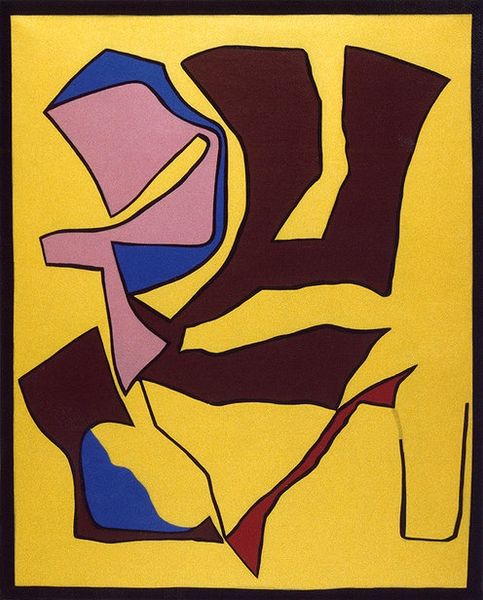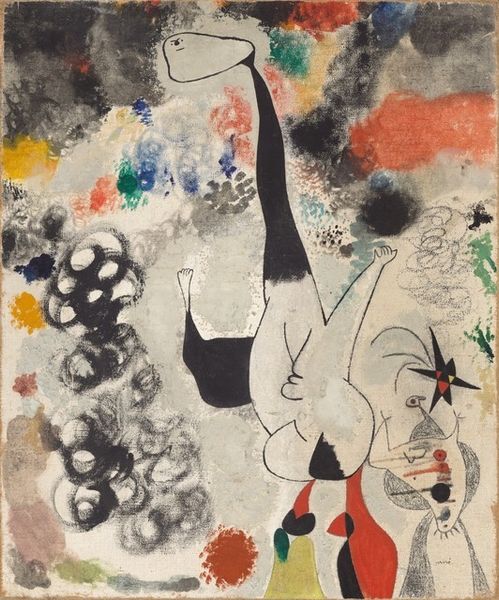
Dimensions: overall: 32.1 x 24 cm (12 5/8 x 9 7/16 in.)
Copyright: National Gallery of Art: CC0 1.0
Editor: This is Paul Klee's "Baroque Centaur", a watercolor and drawing from 1939. It's quite striking, isn't it? The bold outlines and somewhat muted palette give it an almost primitive feel, despite the title suggesting something grand and elaborate. How do you read this piece? Curator: The choice of materials in "Baroque Centaur" is intriguing. Klee, amidst the burgeoning industrialization, opts for watercolor and drawing—relatively accessible and perhaps 'humble' media. It presents a curious contrast, doesn't it, against the 'Baroque' in the title? Could it be a commentary on the availability and changing consumption of artistic media in his time, moving away from the elitism of 'high' art? Editor: That's a great point, actually. The mass production of paints and paper, alongside his seemingly simplified style, does sort of democratize the artistic process. Does the subject matter—a centaur—add to this interpretation? Curator: Absolutely. The centaur, a mythical being, is rendered in this almost crude style. Is Klee, through the labor of simplifying and abstracting, making a statement about the shifting perception and accessibility of classical subjects in a modernizing world? The work highlights a departure from traditional art production and reflects how society viewed these classical elements in a new light. Editor: So, it's not just about what's depicted, but *how* it's depicted and *with what*. That perspective adds so many layers to appreciate. Curator: Precisely. We begin to see Klee, not just as an artist representing a mythical creature, but engaging with larger themes of labor, artistic materials, and the evolving social landscape around art creation. It shifts our focus from the artwork to what went into making it and why.
Comments
No comments
Be the first to comment and join the conversation on the ultimate creative platform.
